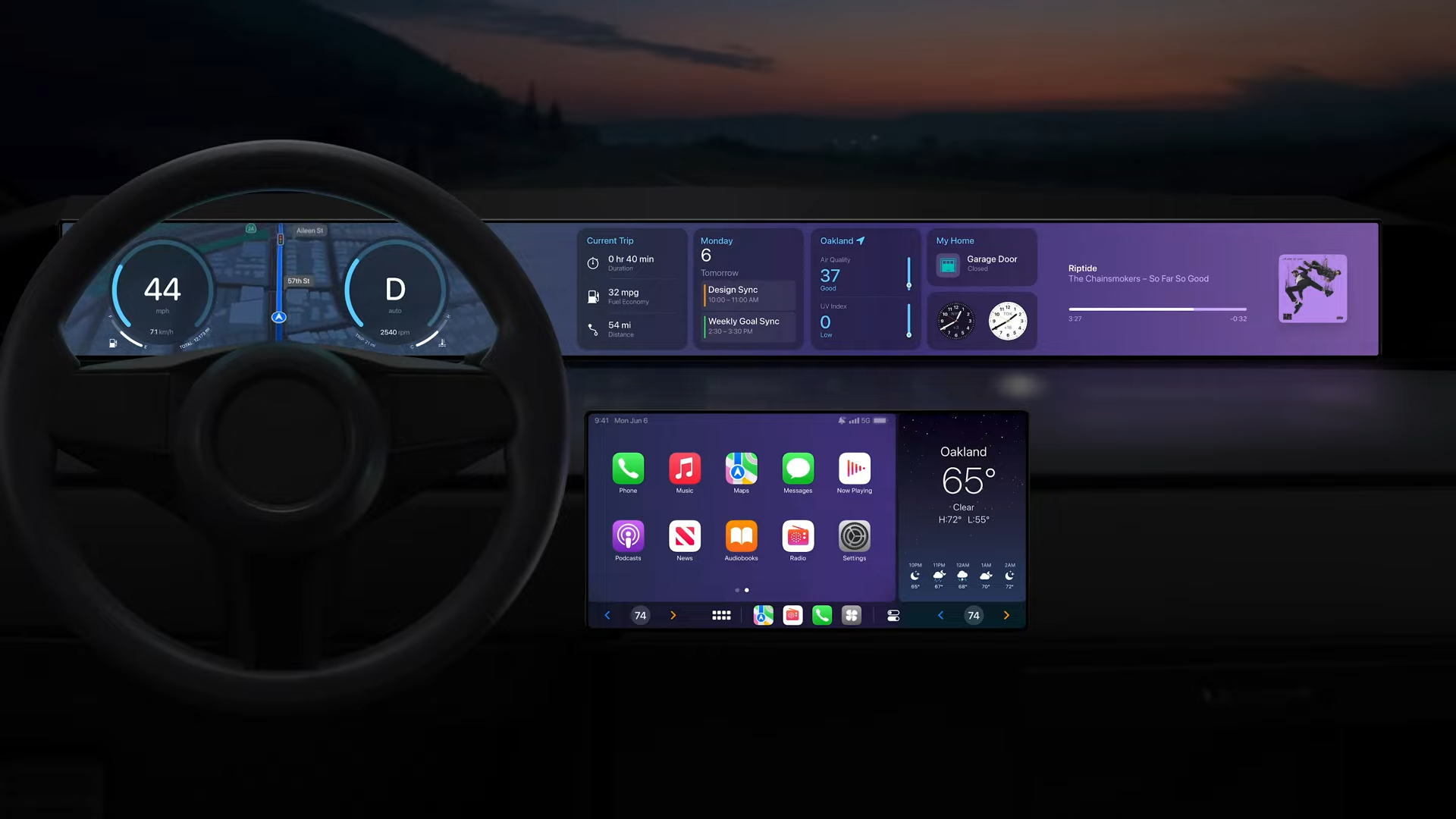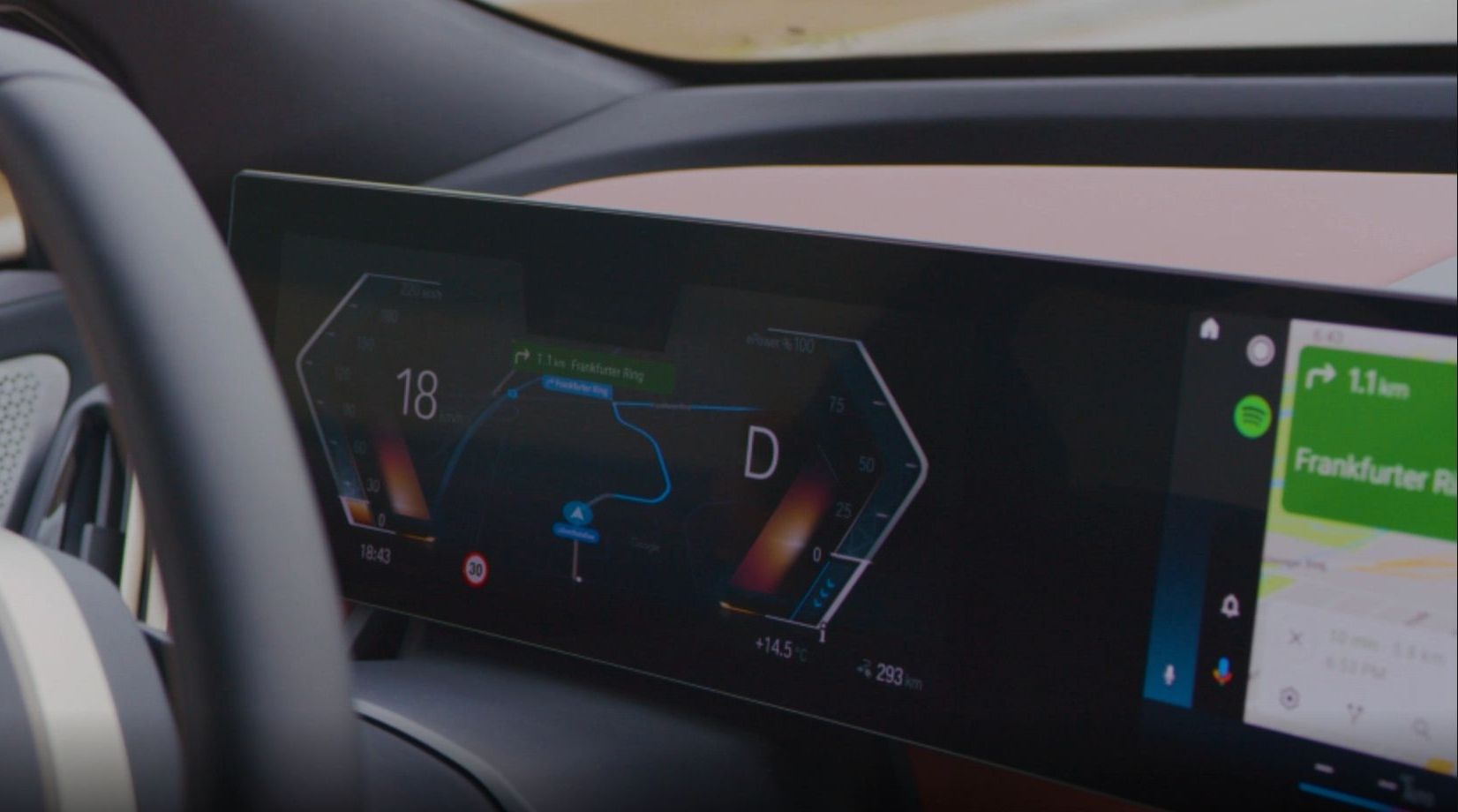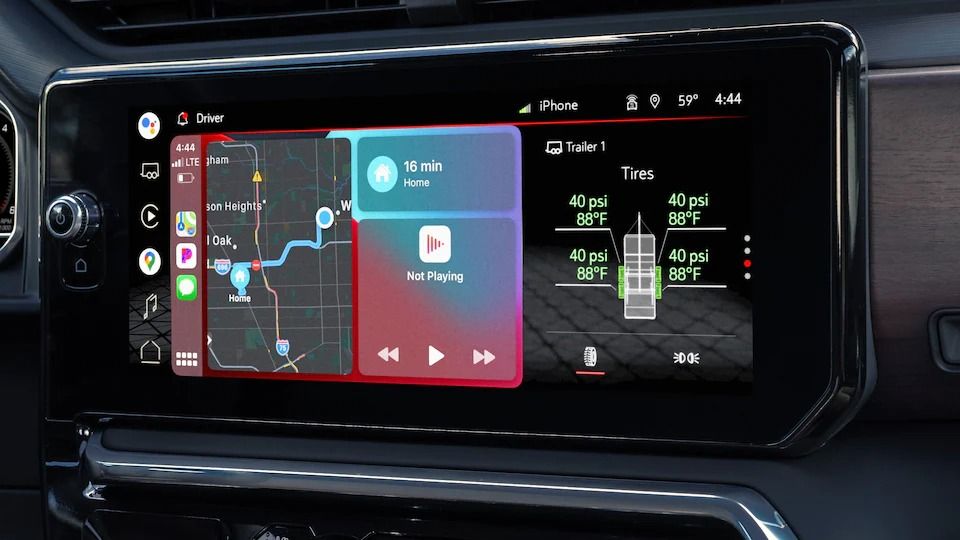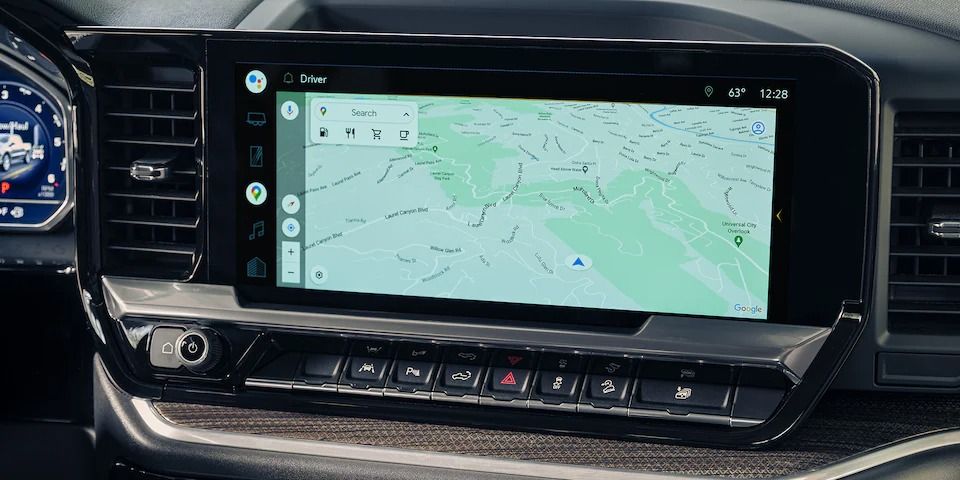Apple kicked off WWDC today with a look at iOS 16, an update that promises to bring a whole lot of Android's customizability to iPhones. Nearly all of the features announced in today's keynote — from that fancy new lock screen to that sweet drag-and-drop feature we're begging Google to copy — will arrive this fall. That said, one thing teased today that will decidedly not arrive in the coming months — or even this year — is the next-gen version of CarPlay, a tool that seems to rival Android Automotive as tech companies duel it out for the fate of your next car.
Currently, Google offers two very different in-car experiences for drivers, though you're likely only familiar with one. Android Auto is what appears on your in-display dashboard when connected to your car, showing apps, navigation, music, and more. Generally speaking, it's the perfect roadside companion — but it can only communicate with your car so much.
Android Automotive is an entire operating system built off of Android — it even gets its own OS upgrades. Automotive is meant for carmakers like GM, Ford, and Polestar to power the entire vehicle. That includes your speedometer and other gauges, tire pressure, and climate control, all in addition to the same basic navigation and media controls provided by Auto. Basically, Automotive is meant to replace the garbage software vehicles are usually running, offering a manufacturer-customized experience with all of the Google bells and whistles built right in.
Automotive is nothing new — it's been around in some form for over five years now. And yet, talking about it routinely requires an explanation similar to the one above, because Google has yet to get serious about its onboard vehicle OS. No matter how many partners it announces, no matter how many vehicles are rumored to support the project, Google continues to let Automotive languish as a side project, built for car manufacturers first and foremost and never really getting into the hands of consumers in a mainstream way.
In theory, Google has plenty of partners lined up to support Automotive, including GM, Ford (eventually), and Honda. Those are some big players, and with vehicles like the 2022 GMC Sierra and its sibling truck, Chevy's 2022 Silverado, we're finally seeing the OS actually hit the streets with cars normal consumers are buying — no offense, Polestar. That should prove Google has a massive lead in this space, yet I can't help but feel like Apple's lining up to eat Automotive's lunch here.
This next-gen version of CarPlay is a long way off — Apple's website says vehicle announcements are coming in late 2023, suggesting it won't launch for consumers until 2024 model year vehicles arrive. That said, today's teaser was equal parts promising and intriguing. Apple showed an interface that functioned much like Android Automotive, communicating directly with your car's instruments to gather information on the current status of your vehicle. Speedometer, odometer, how much gas is in your tank — it's all here.\
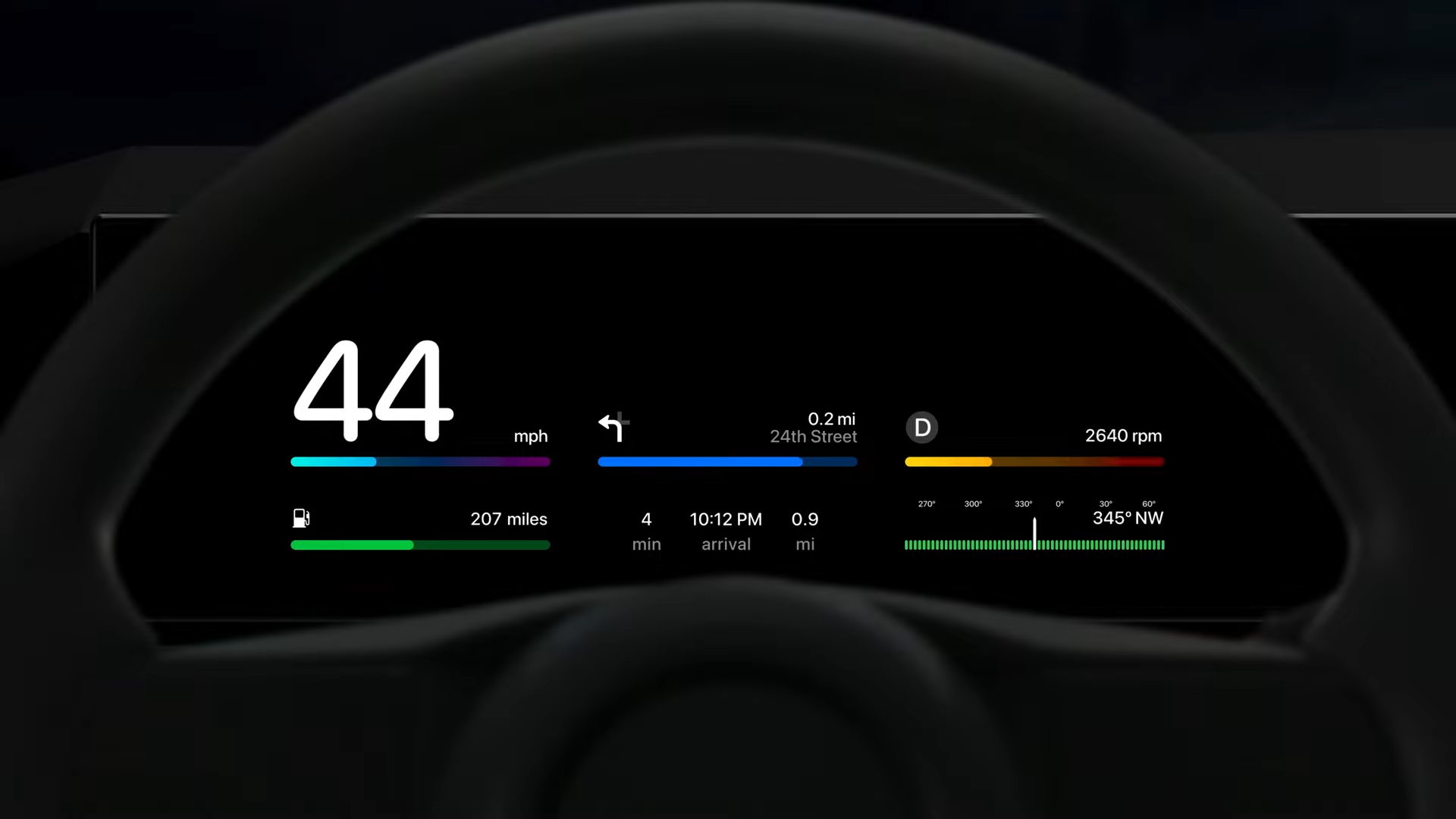
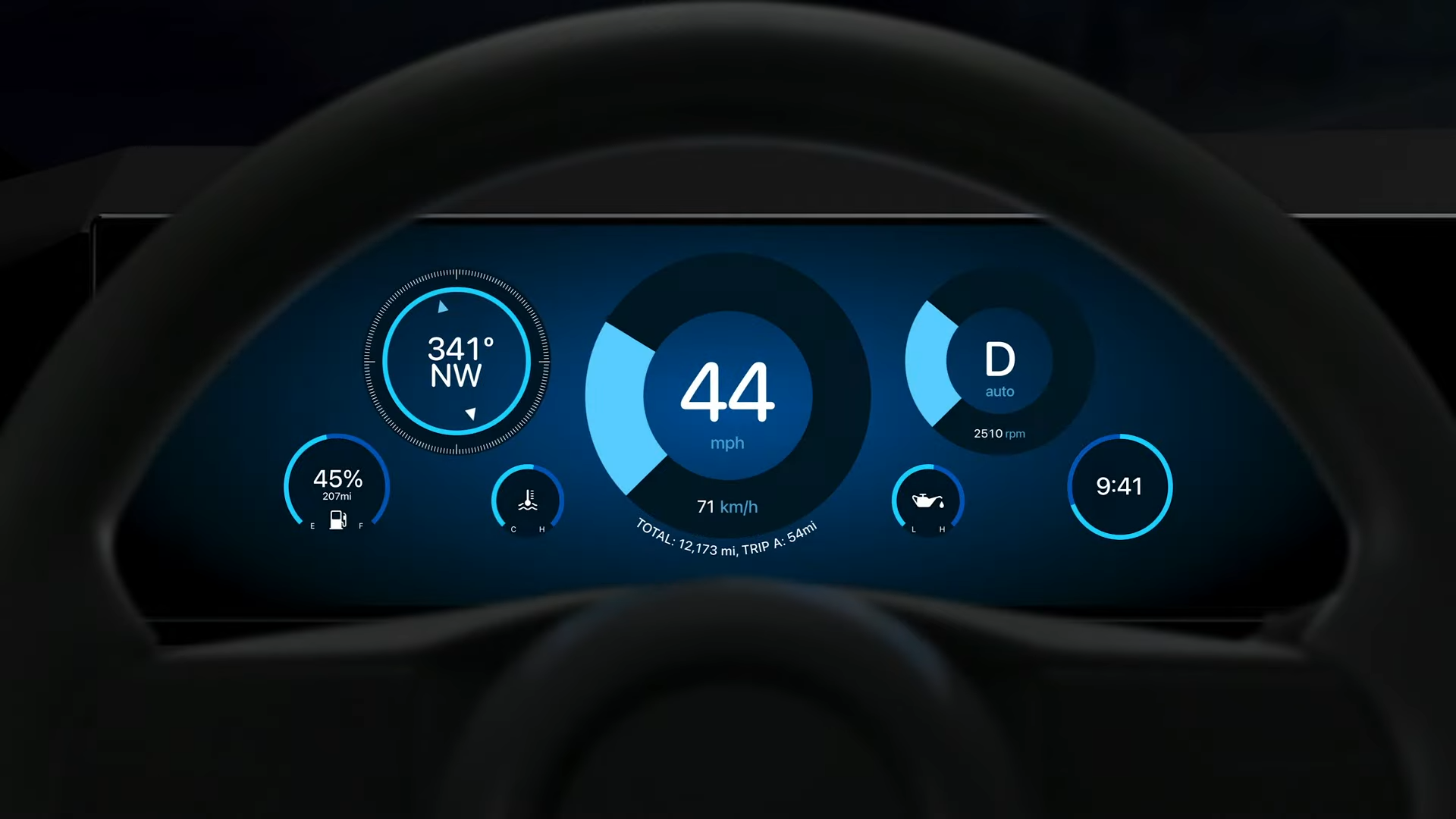
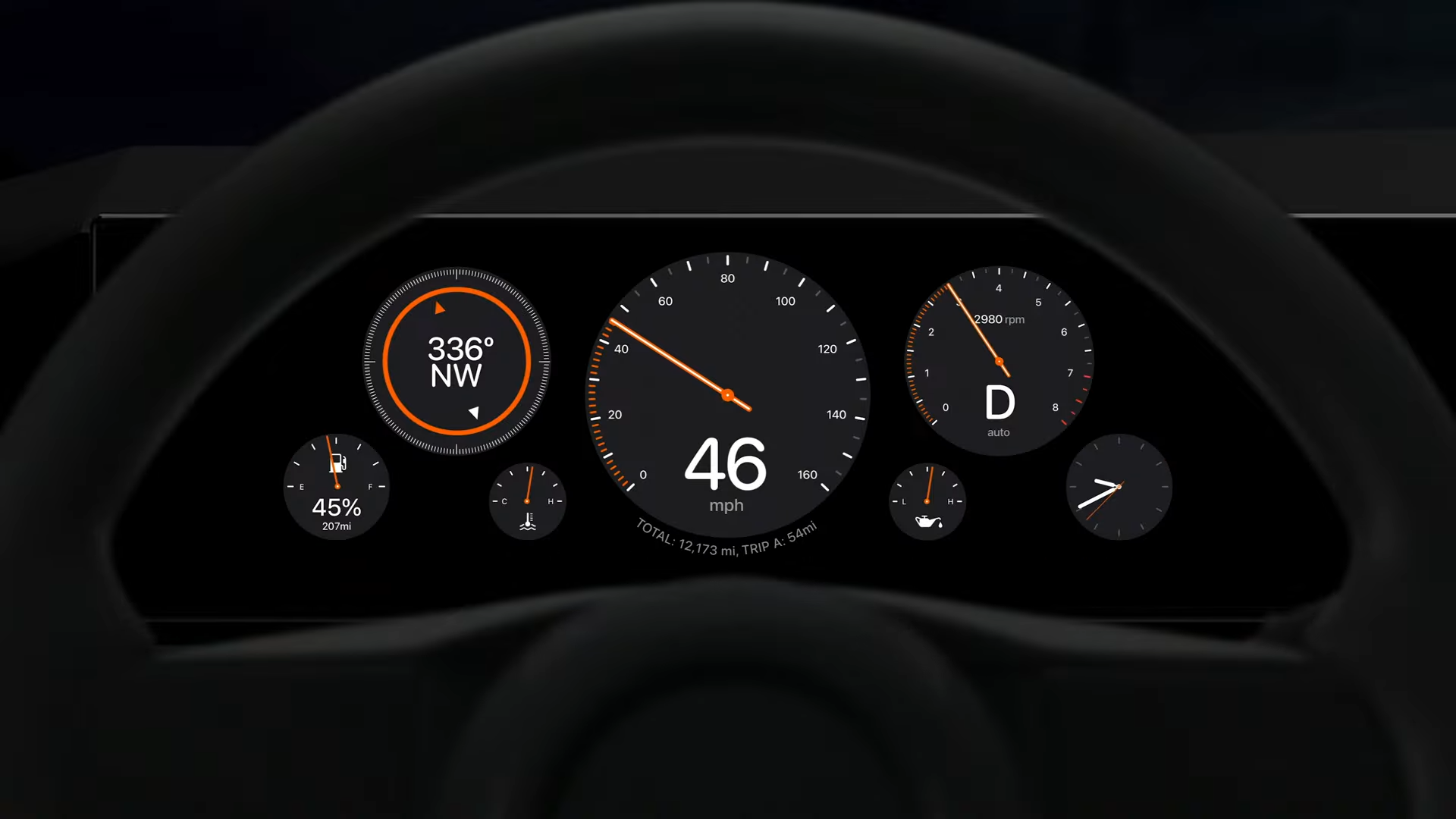
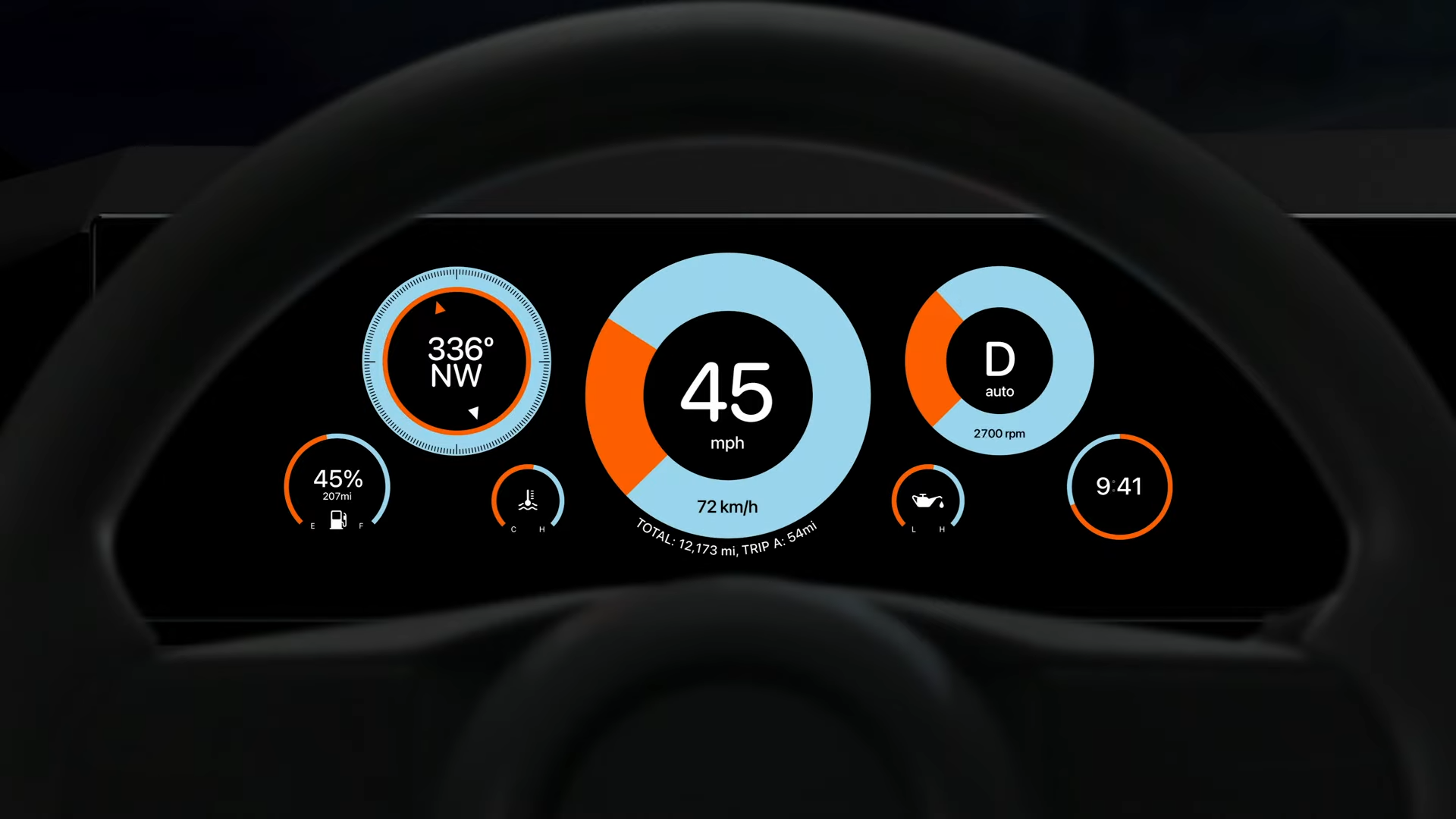
Four custom looks for Apple's next-gen CarPlay.
But unlike the manufacturer-first platform Google built with Automotive, Apple is highlighting the driver here first and foremost. Rewatch Apple's announcement today, and you'll notice the language is all centered around the driver.
"We're also excited to give you the ability to make the core of the driving experience unique to you. We carefully crafted instrument cluster options ranging from the modern to the traditional that use different colors, dial treatments, backgrounds, and layouts, that provide different looks and feels."
In a unexpected twist, this version of CarPlay feels more in line with how we typically think about Android. It's open to customization and personalization — it's even got widgets spread throughout the UI that sync with your apps and accounts. It's a far cry from the boring and mechanical feel brought on by many versions of Automotive, actually presenting itself with a sense of character and cohesion. In comparison, just look at how Google's icons for Maps and Assistant clash with the rest of GMC's experience.
This is Android Automotive, but you'd never know it by looking at it.
In fact, a quick look at GMC and Chevy's websites for their respective Automotive-supported vehicles reveal some serious flaws with Google's plan. Not only has the UI been customized to hell — the two companies even use slightly different icons, despite their shared parent company — but in GMC's case, the first photo showcasing Android Automotive isn't highlighting Assistant or Maps, but CarPlay. In a window, surrounded by gaudy icons laid on top of Android, is Apple's bright and shiny car-friendly UI.
Those icons are like a third-party pack you're unable to change.
Unless Google makes some major changes to how it's developing and marketing Android Automotive — making it for the consumer more than the carmakers — I'm just not sure how the company will maintain a foothold in this market. Apple's next-gen CarPlay seems to require an iPhone to run, as the car and the driver's device communicate between each other, which does give Google some leverage here. Every driver, whether they're using iOS or Android, can interact with Automotive if it's in their car. But in comparison to CarPlay, something heavily featured on the websites of every supported automaker around the world, none of the current Automotive clients seem intent on uttering the word "Android." A couple of vague references to Assistant aside, this software could be developed by anyone.
Google has a massive head start here — again, we're talking about vehicles that are, bare minimum, two years down the road. But CarPlay is in a position where iPhone owners understand exactly what it is. Extending its reach to include all of the other aspects of your car won't be a difficult adjustment to make. If Google wants to become the default way people interact with their vehicles — and not just an OEM for car manufacturers — it needs to rethink its strategy for Automotive going forward. Otherwise, it's just going to become the splash screen iPhone owners see before CarPlay takes control for good.

